Lewis and Clark Expedition Worksheets
Do you want to save dozens of hours in time? Get your evenings and weekends back? Be able to teach about the Lewis and Clark Expedition to your students?
Our worksheet bundle includes a fact file and printable worksheets and student activities. Perfect for both the classroom and homeschooling!
Resource Examples
Click any of the example images below to view a larger version.
Fact File
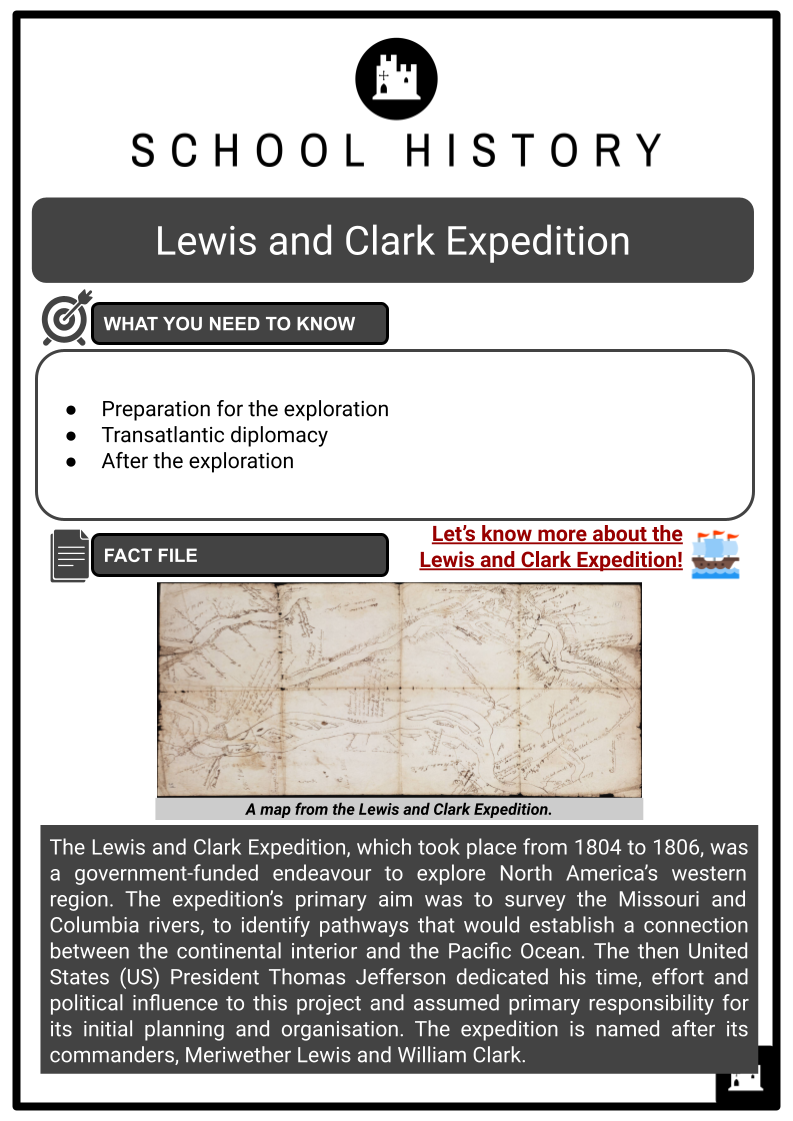
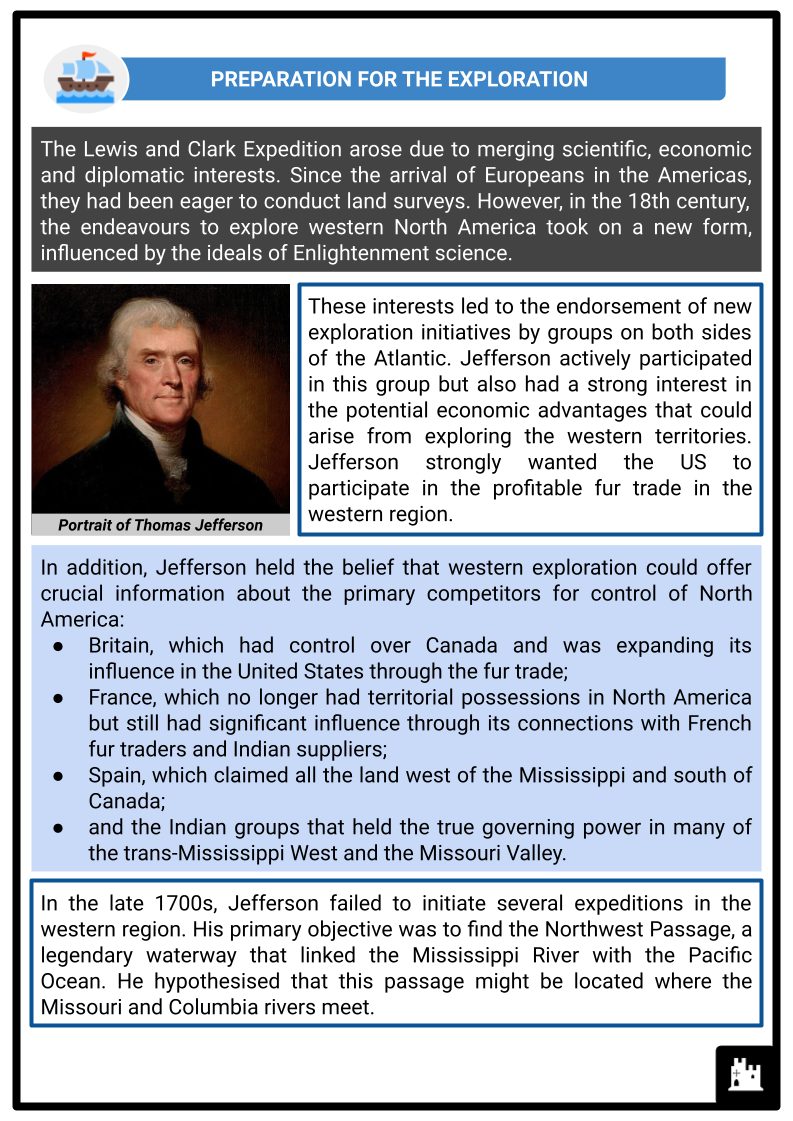
Student Activities
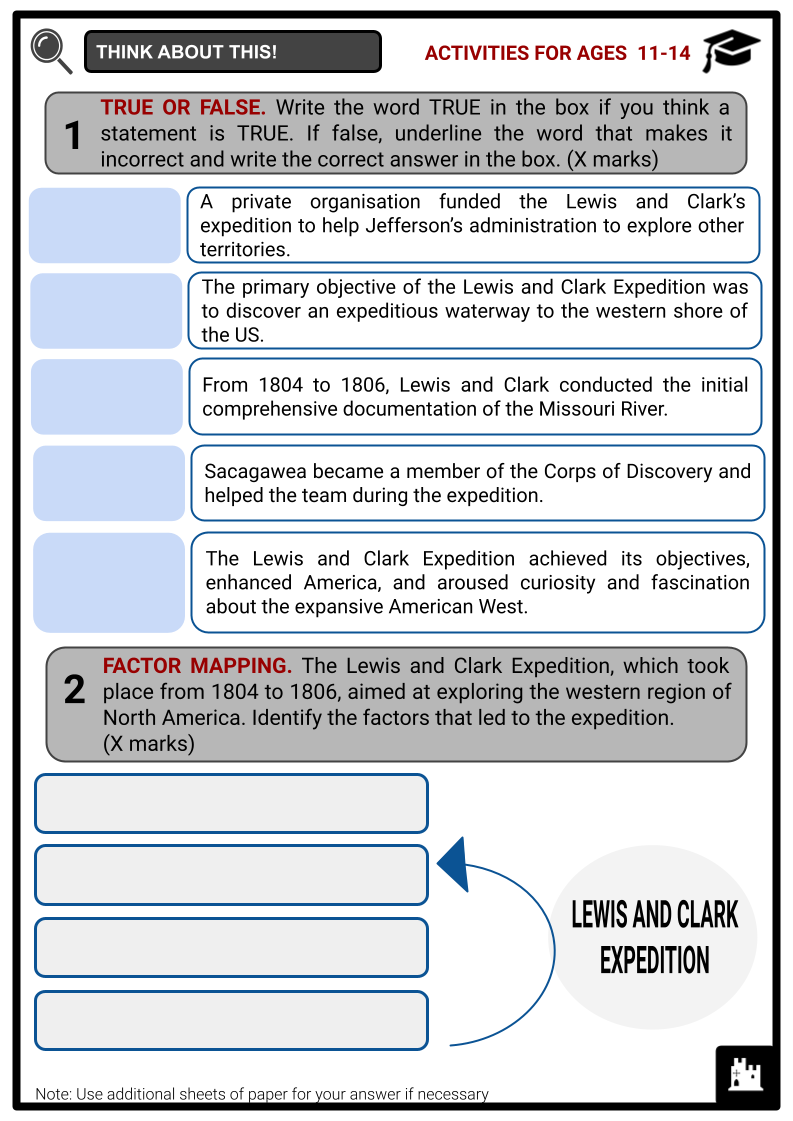
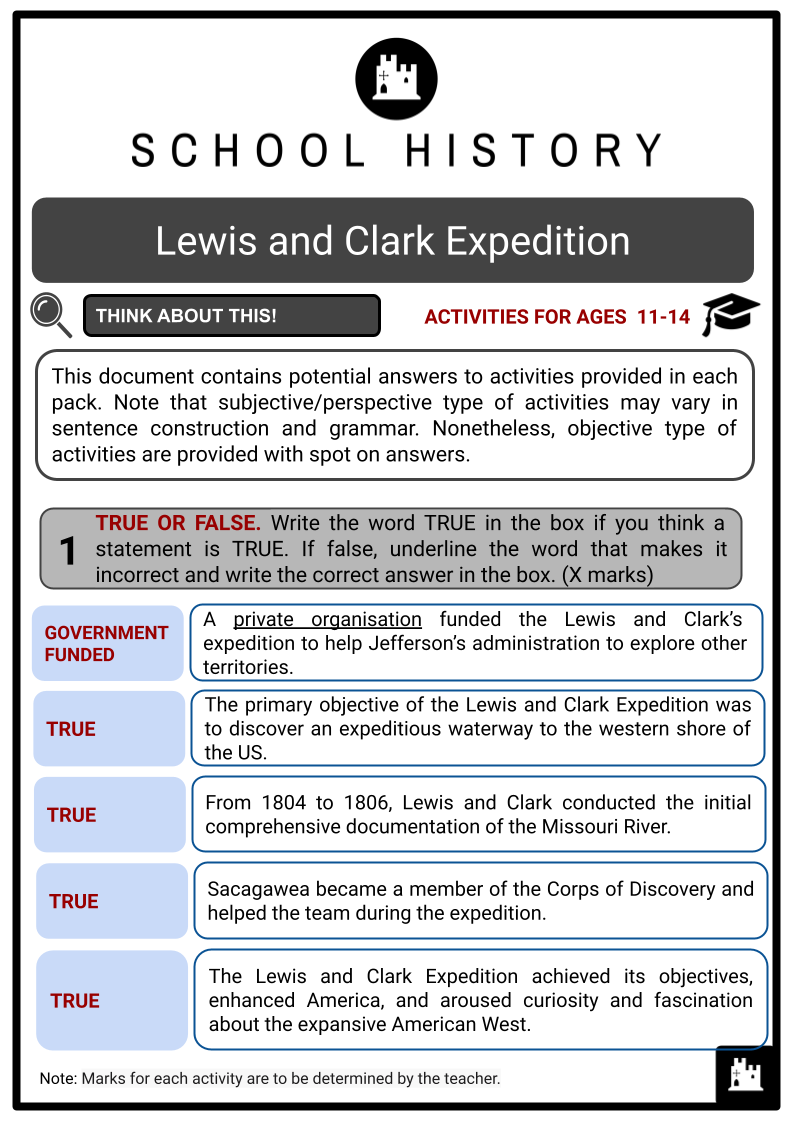

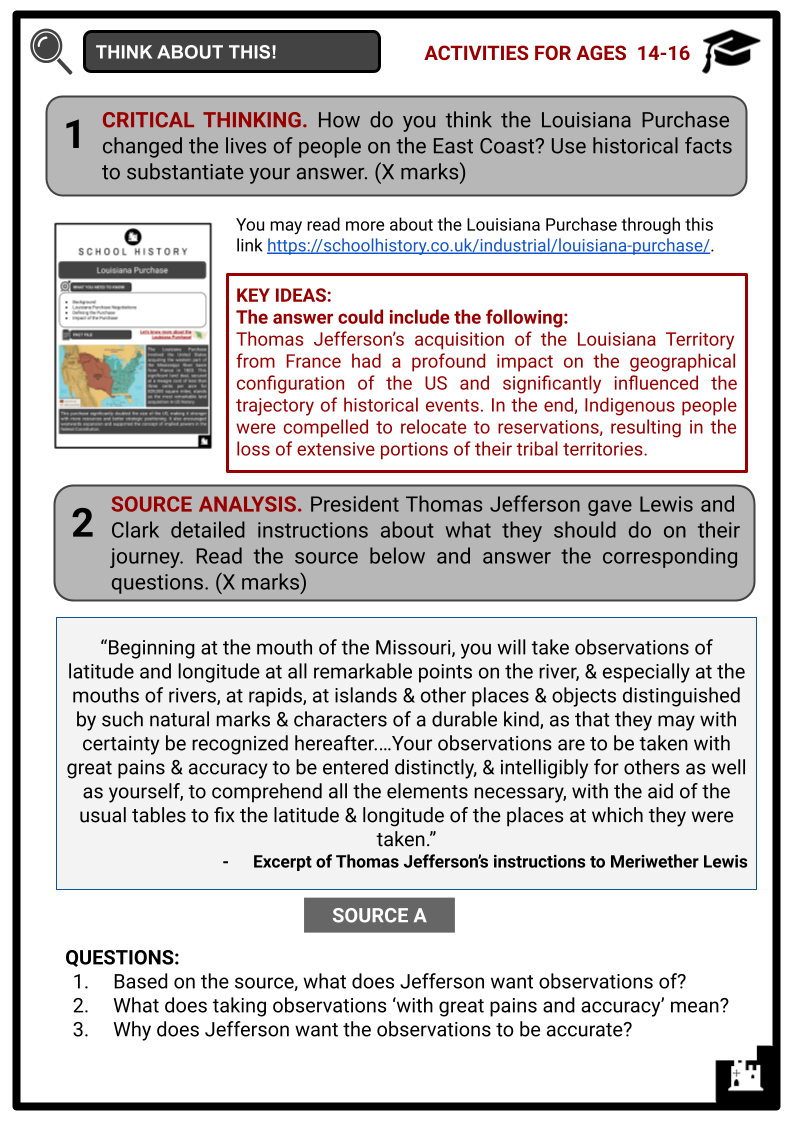
Summary
- Preparation for the exploration
- Transatlantic diplomacy
- After the exploration
Key Facts And Information
Let’s know more about the Lewis and Clark Expedition!
The Lewis and Clark Expedition, which took place from 1804 to 1806, was a government-funded endeavour to explore North America’s western region. The expedition’s primary aim was to survey the Missouri and Columbia rivers, to identify pathways that would establish a connection between the continental interior and the Pacific Ocean. The then United States (US) President Thomas Jefferson dedicated his time, effort and political influence to this project and assumed primary responsibility for its initial planning and organisation. The expedition is named after its commanders, Meriwether Lewis and William Clark.
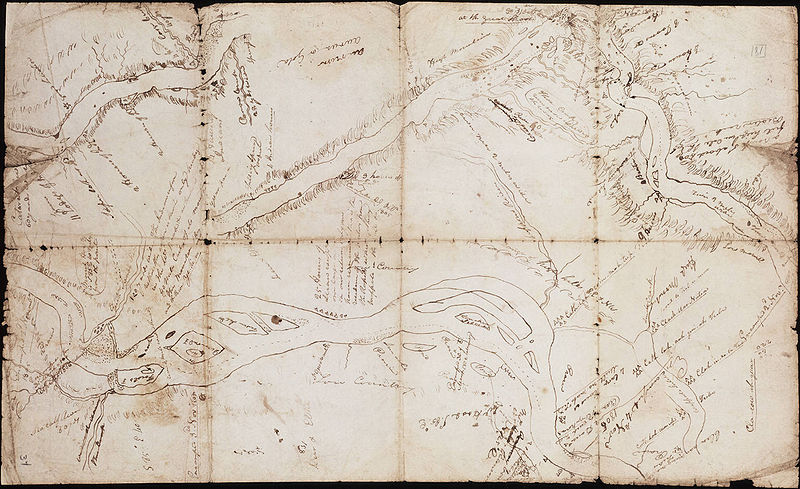
PREPARATION FOR THE EXPLORATION
- The Lewis and Clark Expedition arose due to merging scientific, economic and diplomatic interests. Since the arrival of Europeans in the Americas, they had been eager to conduct land surveys. However, in the 18th century, the endeavours to explore western North America took on a new form, influenced by the ideals of Enlightenment science.
- These interests led to the endorsement of new exploration initiatives by groups on both sides of the Atlantic. Jefferson actively participated in this group but also had a strong interest in the potential economic advantages that could arise from exploring the western territories. Jefferson strongly wanted the US to participate in the profitable fur trade in the western region.
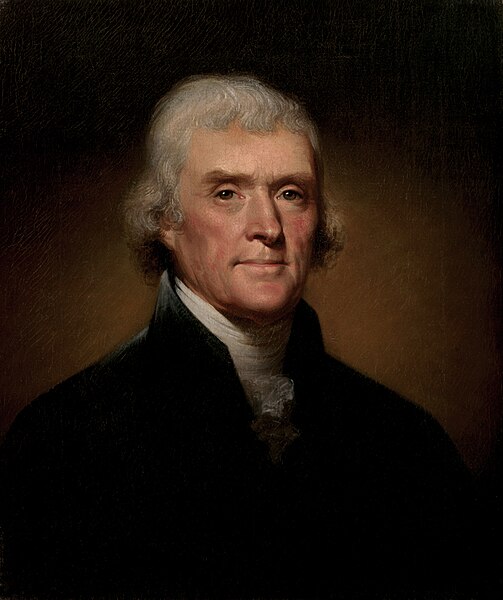
In addition, Jefferson held the belief that western exploration could offer crucial information about the primary competitors for control of North America:
- Britain, which had control over Canada and was expanding its influence in the United States through the fur trade;
- France, which no longer had territorial possessions in North America but still had significant influence through its connections with French fur traders and Indian suppliers;
- Spain, which claimed all the land west of the Mississippi and south of Canada;
- and the Indian groups that held the true governing power in many of the trans-Mississippi West and the Missouri Valley.
- In the late 1700s, Jefferson failed to initiate several expeditions in the western region. His primary objective was to find the Northwest Passage, a legendary waterway that linked the Mississippi River with the Pacific Ocean. He hypothesised that this passage might be located where the Missouri and Columbia rivers meet.
- Upon assuming the presidency of the US in 1801, Jefferson had the necessary political authority and institutional means to implement his objectives effectively. Jefferson, with limited funding provided by Congress, oversaw the initial planning for the voyage. He quickly chose Meriwether Lewis, a captain in the US Army and his secretary at that time, to assume the role of commander for the expedition. Lewis subsequently chose William Clark as his expedition leader.
- Lewis and Clark were born amid the lower echelons of Virginia’s social elite. Lewis grew up in Virginia, while Clark predominantly spent his formative years in Kentucky. The two individuals met one another in 1795 during their time as officers in the US Army.
- Despite their brief encounter and contrasting personalities – Lewis being passionate and impetuous, while Clark was quiet and organised – they formed a steadfast bond in 1803 that remained unwavering in the years that followed.
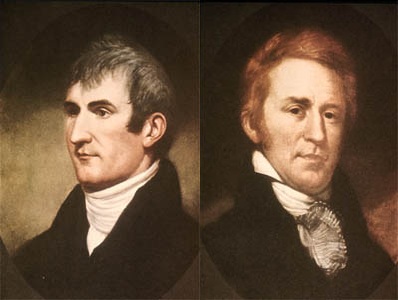
- The strength of their bond was further solidified when Clark, who had voluntarily stepped down from his position as captain in 1795, was only granted a lower-ranking position of first lieutenant in 1803.
- Lewis disregarded the official difference in rank and addressed Clark as his co-captain. The disagreement regarding Clark’s rank elucidates why they would subsequently be referred to as ‘Captains Lewis and Clark’, even though Lewis held the rank of Captain and Clark had the rank of Lieutenant during the trip.
- During the latter part of 1803, Jefferson, Lewis and Clark collaborated to strategise and make arrangements for the upcoming trip. Jefferson meticulously crafted explicit directives.
- Jefferson’s objective for the mission was to investigate the Missouri River and its main tributaries thoroughly, to find a direct and feasible water route that would connect the continent to facilitate trade.
- Jefferson included a comprehensive list of supplementary goals. He sought knowledge regarding geography and climate, flora and animals, Indigenous peoples’ ethnography and area trade.
- Jefferson dispatched Lewis to Philadelphia in 1803 to acquire knowledge about medicinal remedies from Benjamin Rush, a physician and former prominent figure in the American Revolution.
- In addition, Jefferson made arrangements for Lewis to receive additional education from Andrew Ellicott, an astronomer who provided instruction on using the sextant and other navigational devices.
- Benjamin Smith Barton, an American botanist, taught Lewis the techniques for describing and preserving plant and animal specimens. Robert Patterson, an Irish-American mathematician, provided Lewis with improvements in calculating latitude and longitude.
- Caspar Wistar focused on fossils and the exploration of potential surviving relics. Nevertheless, Lewis did not lack scientific knowledge and exhibited a notable ability to acquire new information, particularly under Jefferson’s guidance.
- Jefferson maintained an extensive library at Monticello that focused on the geography of the North American continent. Lewis had complete access to this library. He dedicated time to studying maps and books and discussing with Jefferson.
- Lewis and his crew embarked on a journey down the Ohio River to rendezvous with Clark in Louisville, Kentucky, in October 1803 at the Falls of the Ohio.
- Their objectives were to survey the extensive land obtained via the Louisiana Purchase and assert commercial and political control of the Indigenous nations along the Missouri River.
- The Louisiana Purchase of 1803 enabled the US to obtain approximately 828,000 square miles of property west of the Mississippi River.
- This acquisition greatly assisted the goal of the explorers by granting them unparalleled access to a country that was previously under the ownership of Spain and later France.
- The path of Lewis and Clark’s expedition led them up the Missouri River to its source, and then they continued to the Pacific Ocean by following the Columbia River. It is possible that their route was influenced by the alleged transcontinental trek of Moncacht-Apé, who may have travelled the same route around a hundred years earlier.
TRANSATLANTIC DIPLOMACY
- Jefferson’s ambition to explore the western territories beyond the Mississippi would not have been realised through the Lewis and Clark Expedition had it not been for a sequence of diplomatic developments outside the president’s influence. The diplomatic developments significantly altered the expedition, resulting in the planning of new objectives, a heightened sense of urgency, and increased support from the federal government.
- In 1800, France and Spain entered into a clandestine agreement, which, among other provisions, transferred ownership of the Louisiana colony from Spain to France. However, the pact also permitted the Spanish government to rule the colony directly until the French deemed it appropriate to take over.
- The Spanish promptly declined Jefferson’s request to send an expedition into the West, as they believed it was an attempt by the expansionist US to undermine Spanish control.
- Consequently, by 1803, it appeared like an American expedition to the West could be prematurely concluded. The mission was significantly altered by the 1803 Louisiana Purchase, a substantial transfer of land from France to the US that effectively doubled the size of the country.
- This acquisition was particularly significant because it ended Spanish control of the territory and eliminated diplomatic obstacles. However, American policymakers were deeply concerned about their need for more knowledge regarding their recently obtained territory. Consequently, the Lewis and Clark Expedition became a crucial public policy issue.
Exploring the West
- In the winter of 1803–1804, Lewis and Clark enlisted, instructed and provisioned individuals at Camp Dubois on the eastern shores of the Mississippi River in present-day Illinois.
- After the official surrender of Upper Louisiana to the US in March 1804, the expedition officially began on 14 May 1804. The expedition gradually navigated upstream on the Missouri River using a variety of watercraft, including small canoes and a bigger keelboat.
- Although the written record is unclear, it is known that 51 individuals, including Lewis and Clark, participated in the voyage during its initial phase. Some of these men had already expressed their intention to accompany the troop for a portion of the journey.
- Sergeant Patrick Gass, a expedition member, ultimately gave the troop the name Corps of Discovery. While travelling up the Missouri River, most of the expedition’s members were occupied with the arduous endeavour of rowing and occasionally pulling their boats against the river’s strong current. Clark, a seasoned river navigator, typically stayed on one of the boats.
- Meanwhile, Lewis frequently disembarked to survey the terrain, collect specimens of plants and fauna, and oversee a small group of men who hunted for the animals that served as the expedition’s primary food supply. In November 1804, the expedition established a winter encampment near the Mandan Indian towns.
- Fort Mandan was situated near present-day Washburn, North Dakota. Lewis and Clark took this chance to carefully choose expedition members, picking the most dependable, resilient and skilled individuals to continue while sending the others back to Saint Louis with several samples of plants and animals, along with a detailed report for Jefferson.
- In April 1805, a smaller group of 33 individuals, later referred to as the permanent party, departed from Fort Mandan. The group was characterised by its diversity. Lewis and Clark, who were Anglo-Americans, exerted significant influence over the members of the US Army throughout the expedition.
- However, it is important to note that they only constituted a slight majority of the expedition. Several individuals with both French and Indian heritage, sometimes referred to as Métis, had enlisted in the group to fulfil the roles of translators, guides and scouts.
- Toussaint Charbonneau, a Métis, married Sacagawea, a Shoshone lady who was taken captive as a young child by the Hidatsa, a Sioux nation, and nurtured in their towns. In February 1805, Sacagawea delivered a son named Jean Baptiste Charbonneau.
- Despite the recent childbirth, Sacagawea promptly recuperated and successfully attended to the infant’s needs while the voyage commenced.
- Clark’s enslaved individual, York, who had been in his service as a personal attendant for a significant period, also stayed with the group as they proceeded in a westerly direction.
- In the summer of 1805, the expedition successfully arrived at the source of the Missouri River in the Rocky Mountains and subsequently discovered the neighbouring source of the Columbia River.
- Unfortunately, it was near the Missouri River but not immediately linked as Jefferson had anticipated. Upon quick realisation, Lewis discovered the absence of a Northwest Passage.
- Following a long and difficult journey across the Rocky Mountains, the expedition swiftly descended the Columbia River and arrived at the Pacific Ocean on 15 November 1805.
- In the next month, the expedition constructed a winter encampment called Fort Clatsop, situated just a few miles away from what is currently known as Astoria, Oregon. The party commenced their journey back on 23 March 1806. Using the geographical knowledge they had gained from their westward journeys, the group efficiently completed their return trip, arriving at Saint Louis six months later, on 23 September 1806.
- The party subsequently disbanded. Lewis and Clark promptly departed for Washington, relishing festive receptions before presenting themselves in person to Jefferson.
Continental Diplomacy
- The exploratory expedition was an impressive accomplishment. Over two years, the individuals comprising the Lewis and Clark Expedition successfully traversed approximately 8,000 miles, utilising aquatic and terrestrial means of transportation.
- They traversed the Rocky Mountains and withstood extreme hot and cold temperatures. They successfully arrived at their location in the Pacific with few errors. They had endured sickness, venomous snake bites and assaults by grizzly bears. Only a single individual died, not due to the distinctive difficulties of the mission but rather as a result of ordinary appendicitis.
- However, the voyage relied on its resourcefulness and resilience to support itself. It successfully navigated, obtained food, and gained the desired knowledge for Jefferson. This was possible because the trip was not traversing an uninhabited wilderness but rather a densely populated western region.
- The voyage frequently encountered the Indigenous population of the North American West, who had influence and authority over the region.
- In essence, the trip would have been a calamity if it hadn’t been for the choices taken by the Indigenous people to offer provisions, sustenance, knowledge of the land and, most importantly, a secure route.
AFTER THE EXPEDITION
- The outcomes of the explorers after their return exemplify the conditions of living in the North American West during the early 1800s. Most of the expedition’s members dispersed towards the West, searching for their fortunes in the fiercely competitive and frequently perilous realm of global and intercultural trade. Many members met a tragic demise, perishing as a result of failed negotiations that turned violent.
- The trip profoundly impacted the lives of Lewis and Clark. Jefferson quickly advanced both individuals within the federal system. In 1807, Jefferson appointed Lewis as the governor of the Louisiana Territory.
- Despite Lewis’ previous success as an expedition leader, his tenure as a territorial governor was marked by failure. He faced severe criticism in both Saint Louis and Washington, DC, before ultimately taking his own life in 1809. Clark emerged from Lewis’ shadow and rose to become one of the most influential authorities in the American West, presenting a stark contrast.
- In 1813, Clark assumed the role of territorial governor after Lewis and oversaw the establishment of the state of Missouri. In addition, he held the position of a US Indian agent from 1807 until his death in 1838. Lewis and Clark dedicated their careers to transforming the western region during the 19th century.
- The Indigenous nations, who initially had political sovereignty over the West, gradually surrendered their autonomy and later their land to a progressively dominant federal government.
Frequently Asked Questions
- Who were Lewis and Clark?
Meriwether Lewis and William Clark were American explorers who led the Corps of Discovery Expedition, commissioned by President Thomas Jefferson in 1803.
- What was the purpose of the Lewis and Clark Expedition?
The main purpose was to explore and map the newly acquired Louisiana Purchase territory, find a practical route across the continent's western half, and establish an American presence in the Northwest before European powers.
- What was the route of the expedition?
The expedition followed the Missouri River westward, then crossed the Rocky Mountains and descended to the Pacific Ocean. On the return journey, they retraced their route, though they explored different areas and used rivers more for travel.
